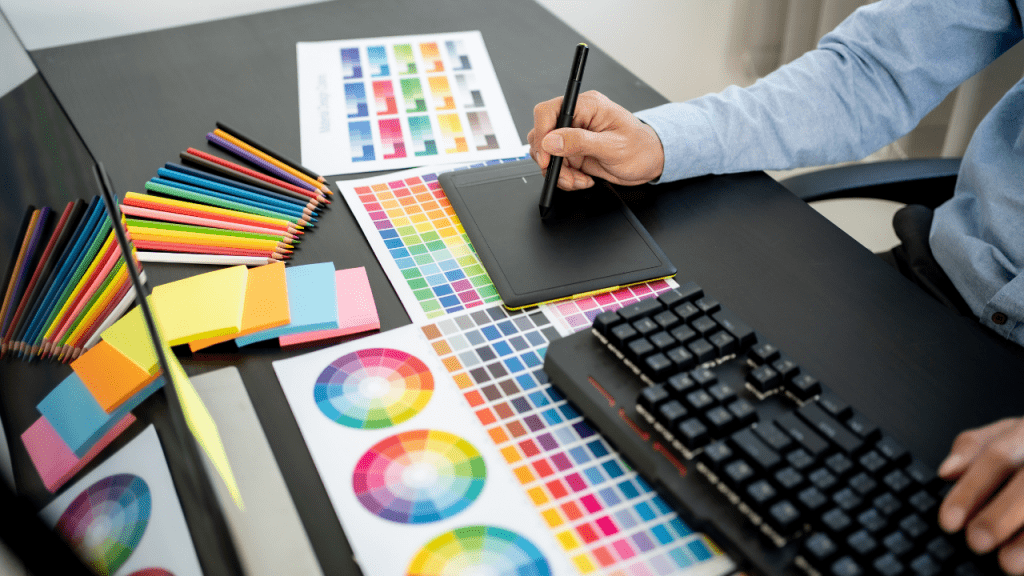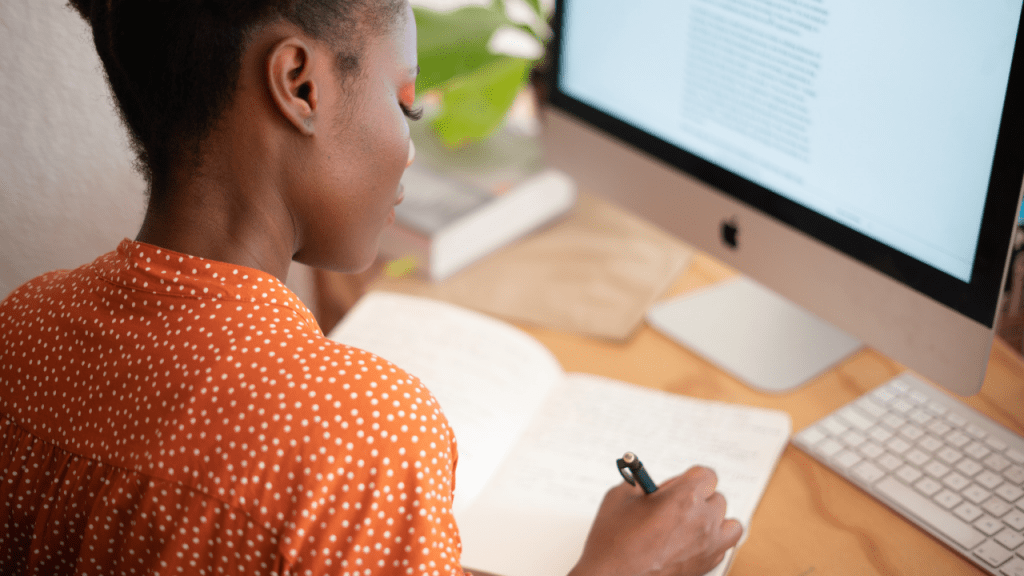Photo retouching is an essential art for enhancing and sublimating images. Thanks to powerful digital tools, it’s possible to transform a simple photo into a work of art. Photoshop is one of the most popular and versatile programs for this task. But how do you retouch a photo with Photoshop? This step-by-step guide will take you through basic and advanced techniques for retouching your photos with Photoshop. You’ll discover how to correct colors, remove imperfections, adjust brightness and add creative effects. Follow our tips to master this indispensable tool and give new life to your photos.
However, if you want an expert to take care of retouching your photos on Photoshop, don’t hesitate to go to BeFreelancr.
What are the basic Photoshop tools for photo retouching?
To retouch a photo with Photoshop, it’s crucial to know the basic tools available in the software.
The selection tool
The Selection Tool lets you select and isolate specific parts of your image. Use it to make precise adjustments to targeted areas. The most common selection tools are the lasso, magic wand and quick selection.
Crop tool
Cropping is essential for adjusting the composition of a photo. The Crop tool lets you resize and redefine the proportions of your image. This helps center the subject and eliminate peripheral distractions.
The duplicate buffer tool
The duplication buffer is ideal for removing unwanted elements. Copy one part of the image and apply it to another to erase objects or imperfections. This creates a uniform, polished appearance.
Correction brush tool
The correction brush is perfect for touching up small imperfections. It analyzes the surrounding pixels and adapts to blend naturally with the rest of the image. Use it to eliminate blemishes, wrinkles and other small defects.
Adjustment layers
Adjustment layers let you modify brightness, contrast, saturation and other parameters without altering the original image. They are non-destructive and offer maximum flexibility for your adjustments.
By mastering these basic tools, you’ll be able to retouch your photos with Photoshop efficiently and professionally.
How to adjust the brightness and contrast of a photo in Photoshop.
Adjusting the brightness and contrast of a photo in Photoshop is essential for improving its visual quality and impact.
Using brightness/contrast adjustments
To begin, open your photo in Photoshop. Go to the “Image” menu and select “Settings”, then click on “Brightness/Contrast”. A window opens with two sliders. The brightness slider brightens or darkens the image. Slide it to the right to increase brightness, or to the left to decrease it. The contrast slider increases or decreases the difference between light and dark areas of the image. Move it to the right for a stronger contrast, or to the left for a softer effect.
Using levels
For more precise adjustment, use the “Levels” tool. Go to “Image”, then “Settings” and select “Levels”. This option displays a histogram representing the image’s tones. Adjust the sliders below the histogram to modify the dark, medium and light tones. This allows you to correct exposure and improve contrast in a more controlled way.
Using curves
For advanced adjustments, use “Curves”. Go to “Image”, then “Settings” and select “Curves”. This method offers great flexibility for adjusting image tones. Click and drag the diagonal line to lighten or darken different parts of the photo. Curves allow precise control of tone and contrast.
By following these simple steps, you can easily adjust the brightness and contrast of your photos in Photoshop, improving their overall appearance.
What methods should you use to correct the colors and tones of an image?
To correct the colors and tones of an image, Photoshop offers several effective and intuitive methods.
Color Balance
Color balance is essential for adjusting the overall hues of a photo. Use the “Color Balance” option to adjust cyan, magenta and yellow levels. This corrects unwanted color dominance and creates a more balanced image.
Hue/Saturation
The Hue/Saturation tool allows you to modify the intensity of colors in an image. Access “Hue/Saturation” in the settings menu. You can adjust saturation to make colors brighter or duller. In addition, the Hue option allows you to change the overall colors of the image.
Selective correction
Selective correction offers precise control over specific colors. Select the “Selective Correction” option and choose a color to modify. Adjust the cyan, magenta, yellow and black levels for each color. This method is ideal for detailed, precise adjustments.
Levels and Curves
The “Levels” and “Curves” tools are indispensable for adjusting the tones of an image. Use levels to modify light, medium and dark tones. Curves offer more detailed control, allowing fine-tuning of contrasts and highlights to achieve the desired effect.
Using these methods, you can correct and enhance the colors and tones of your images, creating visually captivating, balanced photos.
How to remove imperfections and unwanted elements from a photo?
Removing imperfections and unwanted elements is essential for a perfect photo. With Photoshop, you can easily improve your images by following a few simple steps.
Using the correction brush
The correction brush is one of Photoshop’s most powerful tools. It can be used to remove small imperfections such as skin blemishes or dust. Select the tool, then click on the imperfection while holding down the Alt key to select a clean area. Then click on the imperfection to correct it.
.
Try the Duplication Stamp tool
.
The duplication stamp is ideal for more extensive corrections. It allows you to copy part of the image and paste it over an undesired area. Select the tool, hold down the Alt key and click on the area to be copied. Then paint over the element to be removed.
.
Use the localized correction tool
.
The localized correction tool is perfect for quick touch-ups. It works in a similar way to the correction brush, but without selecting a specific area. It automatically analyzes the surrounding pixels to correct the imperfection. Select the tool and simply hover over the imperfection to make it disappear.
Apply selection and fill tools
For larger elements, use the selection tool to frame the unwanted object. Then go to the Edit menu and select Fill after content. Photoshop will fill the area with surrounding pixels, thus removing the unwanted element.
By following these steps, you can easily remove imperfections and unwanted elements from your photos with Photoshop.
How to add creative effects and filters to enhance a photo.
Adding creative effects and filters can transform an ordinary photo into a visually captivating and expressive work of art. Here’s how to use Photoshop to enrich your images with various effects and filters.
Using Adjustment Layers and Special Effects
To get started, use Adjustment Layers in Photoshop to adjust the overall tone of your photo. The Curve layer lets you modify contrasts and tones precisely, while the Vibrance and Saturation layer can intensify or soften colors according to your preferences.
Applying Artistic Filters
Artistic filters offer a palette of effects that can give your photo a vintage, artistic or futuristic look. Use filters like the “Gallery of Blurs” filter to create painterly or pastel effects, or explore noise reduction filters to improve image sharpness.
Masking Techniques for Precision
To apply effects in a targeted way, use blend masks. These tools allow you to control precisely where effects are visible and where they are attenuated. For example, you can add an artistic blur only to the background of a photo, while preserving the sharpness of the main subject.
Creating Light and Texture Effects
Adjustment layers and layer styles in Photoshop also allow you to add light and texture effects. Experiment with layer styles such as inlay or overlay to create dramatic lighting effects or subtle textures that enrich the atmosphere of your photo.
By combining these techniques and experimenting with different settings, filters and styles, you can personalize each photo to give it a unique and captivating character. Whether you’re shooting portraits, landscapes or artistic compositions, Photoshop offers a wide range of tools to unleash your creativity and significantly enhance your photos.
The new Photoshop is the perfect tool for you.
Vous avez aimé cet article ? Aidez-nous en mettant 5 étoiles !
Your page rank:









